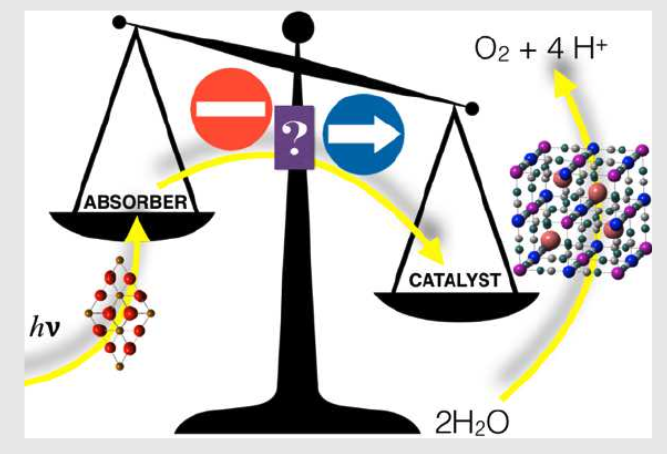The realization of artificial photosynthesis may depend on the efficient integration of photoactive semiconductors and catalysts to promote photoelectrochemical water splitting. Many efforts are currently devoted to the processing of multicomponent anodes, and cathodes, in the search for appropriate synergy between light absorbers and active catalysts. No single material appears to combine both features. Many experimental parameters are key to achieve the needed synergy between both systems, without clear protocols for success. Here we show how computational chemistry can shed some light into this cumbersome problem. DFT calculations are useful to predict adequate energy level alignment for thermodynamically favored hole transfer. As proof of concept, we experimentally confirmed the limited performance enhancement in hematite photoanodes decorated with the competent water oxidation catalyst cobalt hexacyanoferrate. Computational methods perfectly describe the misalignment of their energy levels, at the origin of this mismatch. Photoelectrochemical studies indicate that the catalyst exclusively acts as a hole-scavenger, shifting the hematite surface state to lower potentials. Although kinetics will still depend on interface architecture, our theoretical approach may identify and predict plausible semiconductor/catalyst combinations, speeding up the experimental work towards promising photoelectrocatalytic systems.
